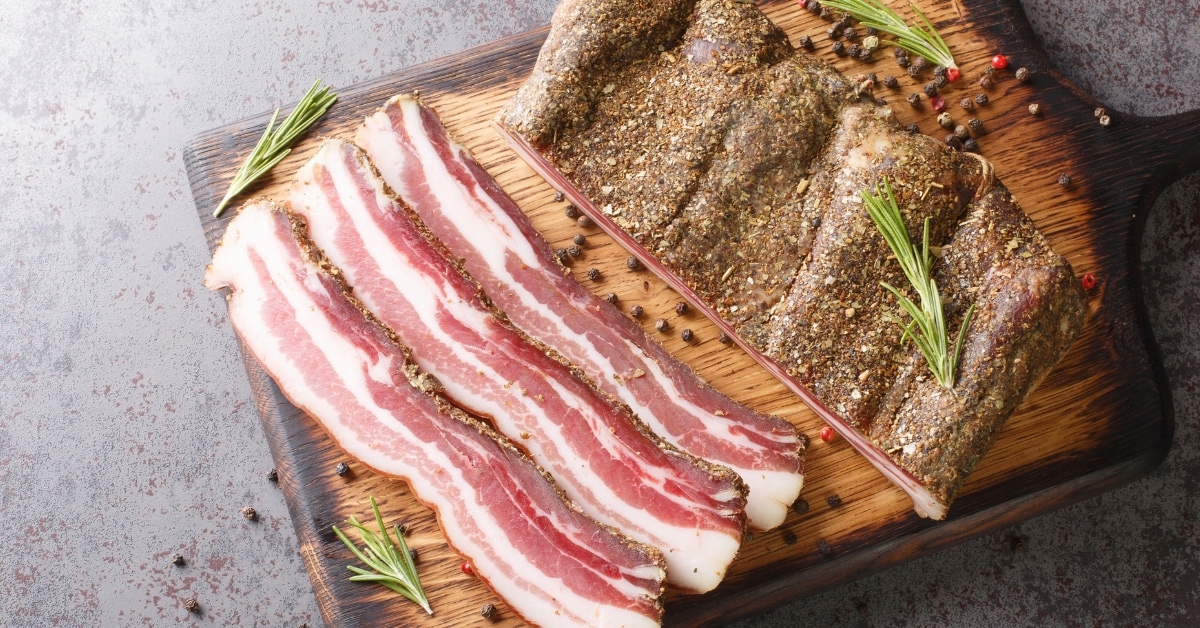Have you ever been to an Italian restaurant and wondered what is guanciale?
It’s on many menus across the globe. And even if the name isn’t familiar, chances are you’ve tried it anyway.
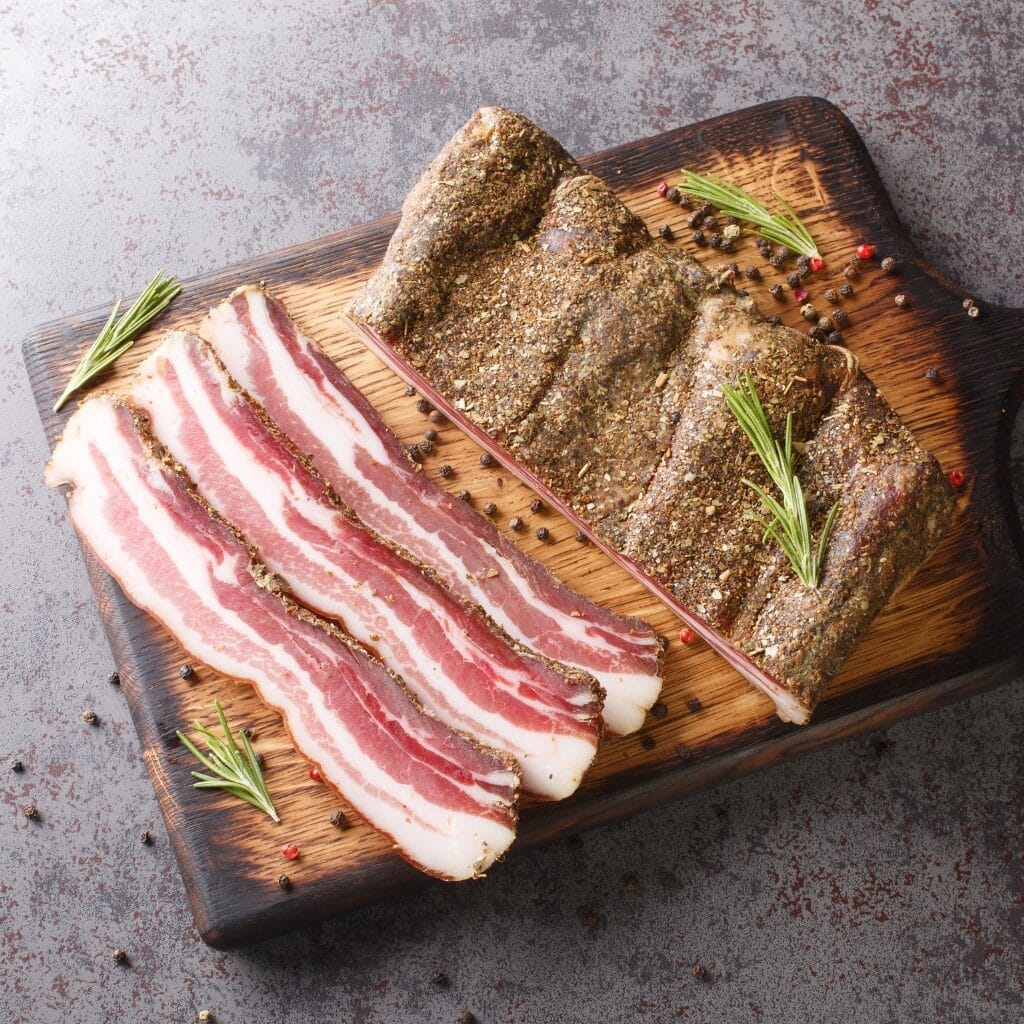
Guanciale is cured pork cheek. And like many other cured meats, it’s brimming with fatty flavor.
It looks a little like bacon or pancetta, and it’s salty like them too.
Ask any Italian what is guanciale, and they’ll tell you: it’s the tasty meat on spaghetti alla carbonara and amatriciana.
But it’s got so many other uses!
What is Guanciale?
So what is guanciale, exactly? As mentioned, it’s a type of cured meat made from pork jowl (the cheek).
Guanciale gets its name from the word “guancia,” which means cheek. And while it’s similar to bacon or pancetta, its richer with more intense flavor.
This fatty meat cut is rich and buttery in flavor. The high fat content also gives guanciale its signature tender, delicate texture.
The meat is cured and typically seasoned with salt, black pepper, bay leaves, sugar, and spices.
After several weeks, it’s infused with uniquely flavor.
As a result, it’s a staple ingredient in classic Italian dishes like pasta, soups, and pizza.
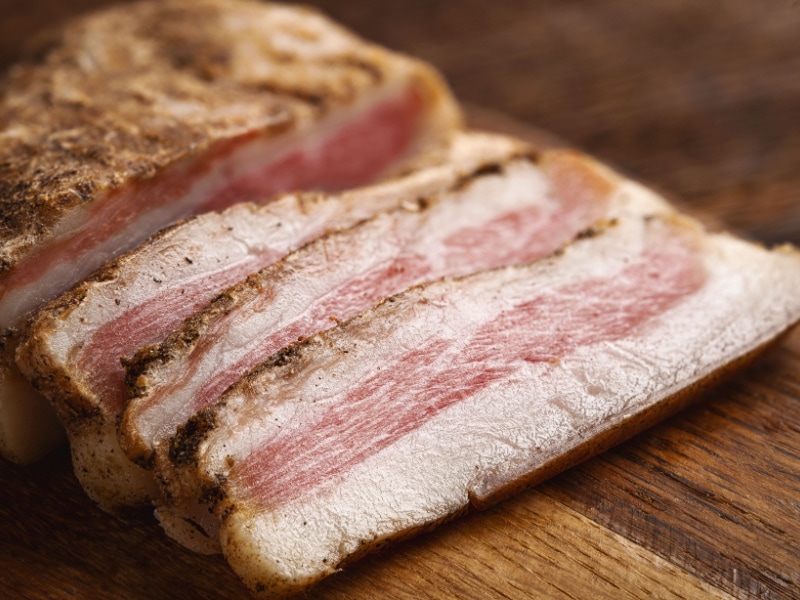
What Does Guanciale Taste Like?
One of the most notable flavor characteristics of guanciale is its saltiness.
Like many other types of cured meat, guanciale is heavily salted during curing.
Another distinct taste is its rich umami flavor from the blend of seasoning and spices.
It has a slightly sweet taste that peeks through as it melts in your mouth.
So the taste of guanciale is complex and multi-layered.
Its richness, saltiness, umami, and subtle sweetness create a harmony of flavors that’ll blow you away.
Guanciale adds a unique flavor to any dish. It’s a must-try for any fan of Italian cuisine.
Guanciale Vs. Pancetta
Guanciale and pancetta are two types of cured meats commonly used in Italian cuisine.
While they may look similar at first glance, key differences set them apart.
First, guanciale is made from pork jowl, while pancetta is made from pork belly.
This means that guanciale has a higher fat content compared to pancetta.
Guanciale is typically softer and more delicate than pancetta, which has a firmer texture.
Guanciale Vs. Bacon
Bacon comes from a pig’s belly, back, or sides and has high-fat content.
Since bacon comes from different parts of the pig, it’s cheaper than guanciale.
Guanciale, on the other hand, has a distinctive, rich flavor often described as more complex and nuanced than bacon.
It has a slightly funky, gamey taste since it’s from the pig’s jowls.
Bacon is smoky, salty, and savory, with a simpler, more straightforward flavor.
Guanciale and bacon only have subtle differences making them a perfect substitute for each other.
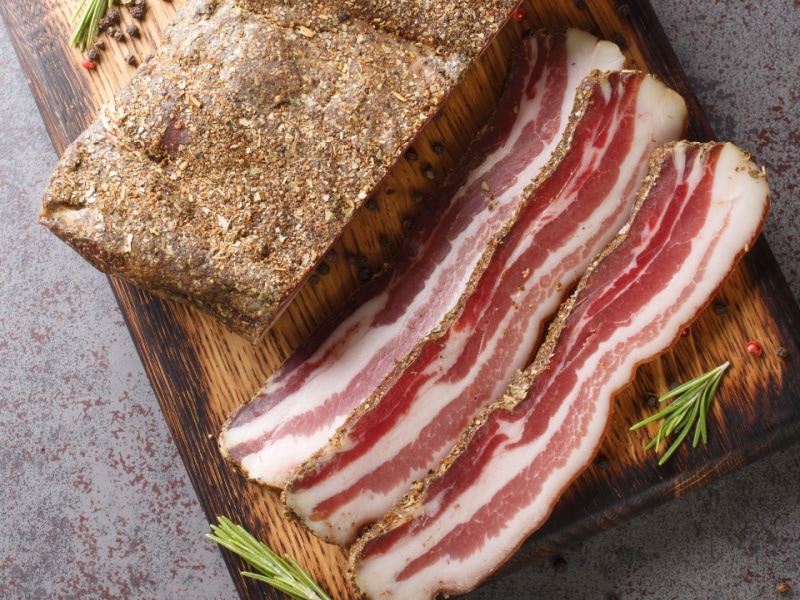
How to Cook Guanciale
Cooking guanciale is a simple way to add depth and flavor to your favorite Italian dishes.
By following these steps, you can create delicious meals that showcase its unique flavors:
1. Remove any packaging from the guanciale and slice it into thick, 1/4-inch cubes.
2. Heat a skillet or frying pan over low to medium heat. Add the guanciale to the pan and let the fat melt into your skillet.
3. Cook the guanciale, stirring occasionally, until the cubes turn tender and crisp. This step should take around 10-15 minutes, depending on the thickness of your slices.
4. Use the crispy guanciale depending on your heart’s desire. Mix it in pasta dishes, toss it in salads, mix it in soups, or sprinkle it over pizza.
Note: Guanciale is already cured, so you can cook it in a jiffy. The goal is to crisp it up while rendering out some of the fat to bring out its flavor.
Where to Buy Guanciale
Guanciale can be more challenging to find than other types of cured meats. But don’t worry, here are a few places to buy it:
1. Italian specialty stores: These are a great place to start when looking for guanciale. They often carry a variety of cured meats as well as other Italian ingredients.
2. Online retailers: Many retailers offer guanciale for sale, including specialty food websites and online marketplaces.
3. Local butchers: Some local butchers may carry guanciale, especially those specializing in cured meats and charcuterie.
4. Farmers’ markets: Depending on where you live, you might find guanciale at local farmers’ markets or artisanal food markets.
5. Grocery stores: Although not all grocery stores offer guanciale, a few offer full meat counters that sell guanciale.
When buying guanciale, choosing a high-quality product from a reputable source is important.
Look for guanciale that is firm to the touch, with a deep red color and plenty of marbling.
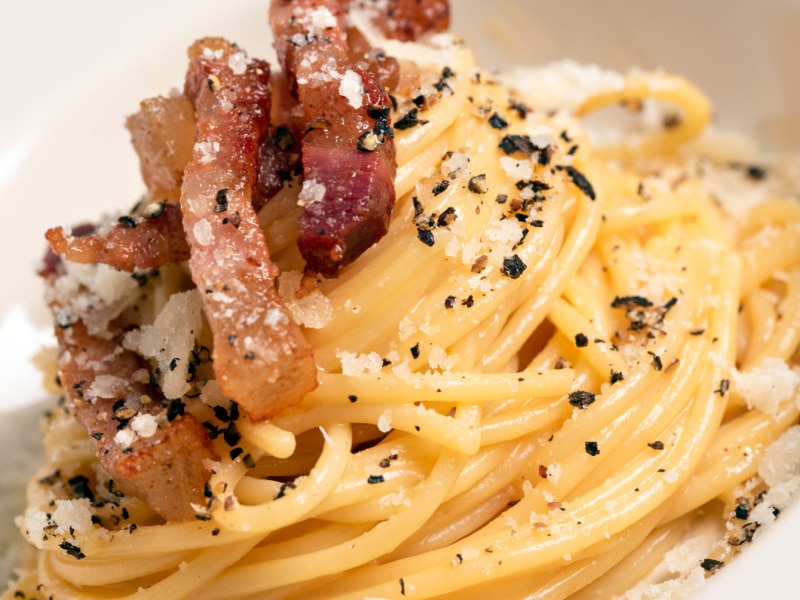
How to Store Guanciale
To store guanciale, you can store it in an air-tight bag and keep it in the refrigerator.
It will stay fresh for up to 10 days. Just be sure to keep it in the coldest part of the refrigerator.
If you want to store guanciale for longer, you can freeze it.
Wrap it tightly in plastic wrap and place it in a resealable freezer bag.
Freezing guanciale can keep it fresh and flavorful for up to 6 months.
Keep in mind that it might lose its original quality as it stays longer in the freezer.
When you’re ready to use frozen guanciale, make sure to thaw it properly.
Remove it from the freezer and let it thaw in the refrigerator.
Never thaw it at room temperature, as this can cause bacterial growth.


